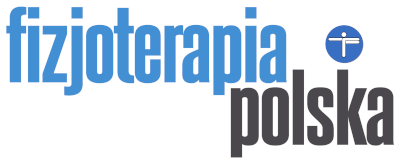Moza Obaid Saeed Alyahyaee, Jinwoong Cheong, Meeyoung Kim
Moza Obaid Saeed Alyahyaee, Jinwoong Cheong, Meeyoung Kim – The feasibility and effect of robot-assisted gait training frequency on gait functions in children with cerebral palsy – A single blinded, randomized pilot study – Fizjoterapia Polska 2024; 24(1); 297-303
DOI: https://doi.org/10.56984/8ZG2EF8iRS
Abstract
Introduction. The aim of this study is to investigate the feasibility and the effect of Robot-assisted gait training (RAGT) frequency on gait functions in children with diplegic cerebral palsy (CP). We hypothesized that RAGT with the increased frequency (4 times a week) will result in greater improvements than RAGT with the common frequency (2 times a week).
Material and methods. Fourteen participants with diplegic CP were assigned to two groups that received only RAGT at different frequencies. The treatment group (TG) received 24 sessions while the control group (CG) received only 12 sessions over 6 weeks. Gross motor function measure (GMFM) D, GMFM E, walking distance (6 minute-walk test), speed (10 meter-walk test), balance (Pediatric balance scale), and the quality of gait (Edinburgh visual gait score) were assessed. Data was collected twice, before and after RAGT intervention period. Also, the feasibility was assessed by the safety and the rates of recruitment, compliance, and adherence.
Result. There was significant improvement in GMFM D, GMFM E, walking distance, balance, and the quality of gait in both groups (p < 0.05). Walking speed has been significantly improved only in TG. The difference in the quality of gait is greater in TG (p < 0.01) compared to CG (p < 0.05). The recruitment rate was 70%. 100% of recruited participants complied with and adhered to the intervention. No adverse events were reported.
Conclusion. RAGT with the increased frequency could induce greater improvement in gait functions than RAGT with the common frequency in children with diplegic CP.
Keywords
rehabilitation, robotics, walking, cerebral palsy

